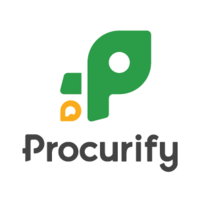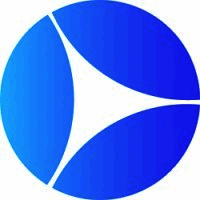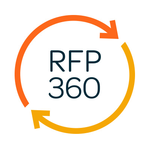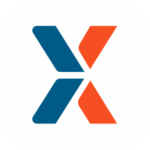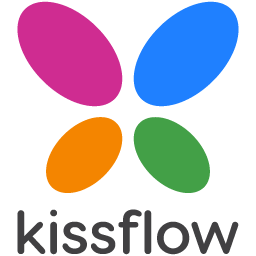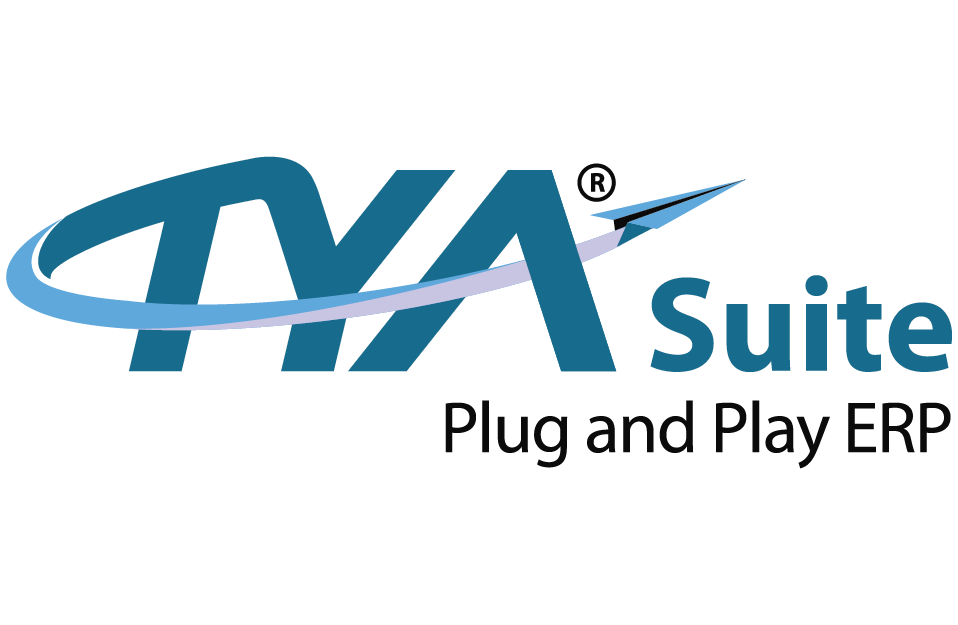Top Procurement Softwares
Procurement software streamlines the purchasing process within an organization by automating various tasks such as requisition, approval, and payment. It enhances transparency, reduces costs, and increases efficiency in managing suppliers and purchases. This type of software is essential for organizations looking to optimize their supply chain operations. It offers features like supplier managemen... Read More
9 companies found
Product Description
SAP Ariba is a cloud-based solution designed to simplify the management of business procurement and supply chain activities. It connects buyers and suppliers from around the world, providing an online trading platform that streamlines the purchasing process. By bringing all procurement operations together in one easy-to-use platform, SAP Ariba allows businesses to improve efficiency, increase cost... Read More
Users
- • No Data
Industries
- • No Data
Market Segment
- • No Data
Product Description
Procurify is a software platform designed to streamline the purchasing process for businesses. Instead of dealing with messy paperwork, countless emails, and approval delays, Procurify offers an intuitive and easy-to-use solution that keeps everything in one place. This software simplifies the steps involved in making purchases—from requesting items to getting them approved, placing orders, and re... Read More
Users
- • No Data
Industries
- • No Data
Market Segment
- • No Data
Product Description
Tradogram is a user-friendly software designed to simplify and streamline the procurement process for businesses of all sizes. Choosing Tradogram means adopting an easy-to-use tool that helps to manage your purchasing activities efficiently, all in one place. With Tradogram, you’ll find that managing suppliers, tracking orders, and controlling budgets becomes remarkably straightforward. Its feat... Read More
Users
- • No Data
Industries
- • No Data
Market Segment
- • No Data
Product Description
Precoro is a user-friendly procurement software designed to help businesses streamline their purchasing processes. This cloud-based platform is built for companies of all sizes, offering a straightforward solution to manage their procurement tasks more efficiently. With Precoro, organizations can handle purchase orders, approvals, and supplier management all in one place. It’s designed to save t... Read More
Users
- • No Data
Industries
- • No Data
Market Segment
- • No Data
Product Description
RFP360 is a software solution designed to simplify and streamline the request for proposal (RFP) process. If you’ve ever found yourself overwhelmed with creating, issuing, and managing RFPs, RFP360 is here to make those tasks much easier. At its core, RFP360 offers a comprehensive platform where you can handle everything related to RFPs in one place. From building and issuing RFPs to scoring and ... Read More
Users
- • No Data
Industries
- • No Data
Market Segment
- • No Data
ProcurementExpress.com
Product Description
ProcurementExpress.com is designed to make expense management straightforward for businesses of all shapes and sizes. Imagine a tool that takes the stress out of purchasing by providing a clear and simple way to request, approve, and track spending all in one place. That’s exactly what this software does. When a team needs supplies or services, they can quickly put in a request through Procuremen... Read More
Users
- • No Data
Industries
- • No Data
Market Segment
- • No Data
Kissflow Procurement Cloud
Product Description
Kissflow Procurement Cloud is a solution designed to help businesses streamline their procurement processes. It's built to simplify how companies manage their purchasing activities, making it easier for teams to collaborate and ensure they get the right supplies, at the right time, without unnecessary complications. The platform is user-friendly, meaning it's intuitive enough for anyone to pick up... Read More
Users
- • No Data
Industries
- • No Data
Market Segment
- • No Data
Product Description
GEP Smart is a comprehensive SaaS-based procurement platform designed to streamline sourcing, procurement, and supply chain operations for businesses of all sizes. Imagine an all-in-one solution that helps you manage your procurement activities seamlessly, from identifying suppliers to managing payments. That's what GEP Smart does. One of the standout features of GEP Smart is its user-friendly in... Read More
Users
- • No Data
Industries
- • No Data
Market Segment
- • No Data
TYASuite Procurement to Pay
Product Description
Managing procurement smoothly is crucial for any business, and TYASuite understands that need perfectly. Their Procurement to Pay software is designed to streamline the entire procurement process from start to finish. Whether you're a small business or a larger organization, this software takes the hassle out of purchasing by automating tasks that traditionally would eat up a lot of your time and ... Read More
Users
- • No Data
Industries
- • No Data
Market Segment
- • No Data
What is procurement software and how does it help businesses?
Understanding Procurement Software
Procurement software is a digital tool designed to streamline and automate the purchasing process of goods and services for businesses. It serves as an integrated platform that manages and facilitates various procurement activities, from order creation to approval workflows, supplier management, and payment processing. By centralizing procurement operations, this type of software assists businesses in enhancing their supply chain efficiency and reducing overhead costs.
Enhancing Efficiency and Transparency
One of the primary benefits of using procurement software is the enhancement of efficiency in purchasing activities. With automated processes, businesses can reduce manual interventions, saving both time and resources. Procurement software allows for the automation of repetitive tasks, such as order creation, approvals, and invoice matching. This reduces the likelihood of errors and accelerates procurement cycles. The standardization and digitization of procurement processes also promote transparency across supply chain operations, enabling better visibility into ongoing transactions and supplier performance.
Cost Control and Spend Analysis
By leveraging procurement software, businesses can exert greater control over their expenses. The software provides tools for detailed spend analysis, helping organizations identify spending patterns and opportunities for cost-saving. With comprehensive reporting and analytics features, firms can monitor expenditures and compare them against budgets in real-time. Procurement software typically includes the ability to streamline and negotiate contracts, which can result in more favorable pricing terms from suppliers and further cost reductions.
Supplier Relationship Management
Effective supplier management is crucial for reliable procurement operations. Procurement software often includes modules for supplier relationship management, allowing businesses to maintain and analyze information related to their suppliers. This includes keeping track of supplier performance, compliance, and contract terms. By maintaining a detailed supplier database, businesses can assess potential risks and foster better collaborations. This enables companies to build stronger partnerships and improves supply chain resilience.
Improving Compliance and Risk Management
Procurement software helps companies comply with regulatory requirements and internal policies. Its ability to centralize procurement data ensures that compliance checks are integrated into every step of the purchasing process. This minimizes the risk of fraud and non-compliance, which can incur significant penalties for businesses. Procurement software often comes with features that support policy enforcement and governance across procurement activities.
Scalability and Integration
Scalability is another advantage of procurement software. As businesses grow, their procurement needs become more complex. Procurement software can accommodate changes in scale, allowing businesses to manage a higher volume of transactions systematically. Furthermore, integration capabilities allow procurement systems to work seamlessly with other business management systems, such as Enterprise Resource Planning (ERP) and Customer Relationship Management (CRM) platforms. This connectivity ensures consistency and accuracy across departments, thereby improving overall organizational efficiency.
In summary, procurement software plays a pivotal role in improving procurement processes by enhancing efficiency, reducing costs, managing supplier relationships, ensuring compliance, and supporting scalability. This makes it an essential tool for businesses aiming to optimize their procurement strategy and maintain a competitive edge.
How can procurement software improve the efficiency of purchasing processes?
Procurement software plays a crucial role in modernizing and enhancing the purchasing process. This technology facilitates more streamlined operations by automating tasks, improving data visibility, and fostering better supplier relationships. Here’s how procurement software contributes to efficiency:
Streamlined Workflows
Procurement software automates and streamlines the entire purchasing cycle. Automation reduces manual intervention in tasks such as requisition creation, purchase order processing, and approval workflows. By reducing the time spent on routine tasks, employees can focus on strategic activities, enhancing overall productivity.
Enhanced Data Management
Effective data management is a hallmark of procurement software. It centralizes data related to suppliers, contracts, purchase orders, and invoices. Easy access to accurate, up-to-date information allows better decision-making and minimizes errors. This transparency ensures compliance and helps identify areas for cost savings.
Improved Supplier Relationships
Maintaining good supplier relationships is essential for an efficient purchasing process. Procurement software enables efficient communication with suppliers, tracking of supplier performance, and better contract management. It ensures that supplier interactions are prompt and effective, paving the way for smoother transactions and enduring partnerships.
Controlled Spending
Procurement software provides organizations with enhanced control over their spending. It establishes pre-approved vendor lists and sets budget controls, preventing unauthorized purchases. The software’s analytical tools help identify spending patterns and optimize costs, thereby ensuring adherence to budgetary constraints and policy compliance.
Real-Time Analytics and Reporting
The ability to generate reports instantly is a significant advantage. Procurement software delivers detailed insights through real-time analytics and reporting features. Decision-makers can analyze procurement activities, track spending, and assess supplier performance. This data-driven approach empowers better strategizing and resource allocation.
Reduction in Processing Times
The speed of procurement transactions significantly affects operational efficiency. From requisition to payment, procurement software accelerates processing times. Electronic data interchange (EDI) and automated invoice processing reduce the time taken for procurement cycles, facilitating quicker delivery of goods and services.
Error Reduction
Manual data entry is prone to errors, which can lead to costly mistakes. Procurement software minimizes these issues by automating data entry processes. This not only reduces the potential for errors but also ensures compliance with regulatory requirements and internal policies.
Increased Collaboration
Procurement software enhances collaboration between departments by providing a platform for sharing information and insights. Departments such as finance, operations, and purchasing can coordinate more effectively, leading to aligned strategies and improved process efficiency.
Vendor Performance Management
Assessing and managing vendor performance is simplified with procurement software. It tracks performance metrics and provides key performance indicators (KPIs) to evaluate supplier efficiency and reliability. Organizations can make informed decisions based on these evaluations, leading to better vendor choices.
In summary, procurement software improves the efficiency of purchasing processes through automation, better data management, and enhanced supplier relationships. It not only optimizes workflows and reduces processing times but also ensures controlled spending and improved collaboration across the organization, leading to a more efficient procurement lifecycle.
What are the key features to look for in procurement software?
Procurement software plays a crucial role in streamlining purchasing processes for businesses. Here are the key features to look for in procurement software:
Vendor Management
Efficient procurement software should offer robust vendor management capabilities. This includes maintaining a comprehensive database of all vendors, managing vendor performance, and facilitating vendor communications. A centralized platform helps streamline vendor relationships and allows businesses to assess vendor reliability and performance easily.
Purchase Requisition
The software should support automated purchase requisitions, allowing users to initiate and track requests with ease. This feature ensures that requests are processed in a timely manner, reducing delays and enhancing workflow efficiency. Automation eliminates the risk of manual errors, optimizing the procurement process.
Purchase Order Management
Procurement software must include purchase order management capabilities. This feature enables the generation, tracking, and management of purchase orders. Users can monitor order status, manage approvals, and ensure that orders align with organizational budgets and policies. A streamlined purchase order process enhances operational efficiency.
Spend Analysis
A critical feature of procurement software is spend analysis. It helps organizations gain insights into spending patterns, identify saving opportunities, and optimize procurement strategies. Detailed reports and analytics facilitate informed decision-making by providing a clear picture of financial outflows.
Supplier Relationship Management
Effective supplier relationship management is essential for leveraging competitive pricing and ensuring product quality. Procurement software should provide tools for monitoring supplier performance, managing contracts, and maintaining healthy relationships. This component helps improve procurement efficiency and supply chain reliability.
Contract Management
Managing contracts efficiently is vital to procurement processes. Software should offer contract lifecycle management (CLM) features to create, store, and retrieve contracts effortlessly. This includes tools for contract negotiation, compliance monitoring, and renewal alerts, which help maintain contract integrity and optimize terms.
Inventory Management
For businesses with significant inventory needs, procurement software should offer inventory management features. This includes tracking stock levels, managing deliveries, and predicting inventory needs. Efficient inventory management reduces downtime and helps maintain smooth operations by ensuring optimal stock levels.
E-Procurement
E-procurement capabilities enable seamless electronic transactions between buyers and sellers. This includes online catalogs, single-click ordering, and direct integrations with suppliers. An e-procurement system streamlines the procurement process and reduces procurement cycle time.
Budget Tracking
Budget tracking features help businesses ensure that procurement activities align with financial limits. Software must allow for setting and monitoring budgets, offering real-time updates on expenditures. This functionality ensures compliance with budgetary policies and supports financial discipline.
Approval Workflow
A customizable approval workflow feature is essential for maintaining control over procurement activities. It ensures that all purchases go through the necessary approval channels before execution. This reduces unauthorized spending and fosters accountability within the procurement process.
Reporting and Analytics
Advanced reporting and analytics features provide deep insights into procurement operations. Dashboards and customizable reports help track KPIs and assess procurement performance. These insights facilitate strategic planning and continuous improvement.
In conclusion, procurement software must encompass various key features to streamline and optimize procurement processes within organizations. Each feature enhances different aspects of procurement, ensuring efficiency and compliance.
How does procurement software integrate with other business systems?
Integration with Enterprise Resource Planning (ERP) Systems
Procurement software often integrates seamlessly with ERP systems to centralize data and streamline processes. This integration allows for automatic data exchange, ensuring that procurement activities align with broader business operations. For example, once an order is placed, the procurement software can update the ERP’s inventory and accounting modules, reflecting changes in stock levels and financial records in real-time. This connectivity reduces manual entry, minimizes errors, and provides a comprehensive overview of the enterprise’s financial health and resource availability.
Integration with Accounting Software
By integrating procurement software with accounting systems, businesses can facilitate efficient financial processing. This connection allows for automatic reconciliation of purchase orders, invoices, and payments. The software ensures that all financial transactions are accurately recorded, providing real-time visibility into expenditures and budget compliance. Such integration simplifies end-of-month financial closures and aids in regulatory and compliance checks.
Integration with Supply Chain Management (SCM) Systems
Procurement software integration with SCM systems enhances supply chain visibility and agility. This linkage enables synchronization of data related to suppliers, orders, and shipments. Businesses can track order statuses, manage supplier relationships, and optimize logistics operations. The cooperative nature of this integration ensures that procurement strategies align with supply chain demands, mitigating risks such as stockouts or overstock situations.
Integration with Customer Relationship Management (CRM) Systems
Linking procurement software with CRM systems can bolster sales and customer service efforts. This integration helps ensure that inventory levels meet customer demand, supporting sales forecasts and order fulfillments. Procurement insights can feed into the CRM, allowing sales teams to provide accurate product availability information and delivery estimates. Consequently, customer satisfaction is enhanced through timely and reliable service.
Integration with Inventory Management Systems
Procurement software integration with inventory management tools is crucial for maintaining inventory accuracy. This integration provides real-time data on stock levels, facilitating strategic decision-making related to reordering and stock replenishment. Automated updates between the two systems help prevent stockouts and overstock situations by ensuring that inventory levels correspond to actual procurement and sales activities.
Integration with Supplier Portals
Supplier portals are another critical point of integration. Procurement software can connect with these portals to automate communications such as purchase orders, acknowledgments, and shipping notices. This integration enhances supplier relationship management by simplifying collaboration, improving transparency, and reducing lead times. Real-time updates from suppliers also aid in effective demand planning and inventory optimization.
Benefits of Procurement Software Integration
- Efficiency: Reduces redundant data entry and process duplication.
- Accuracy: Ensures consistent and error-free data across systems.
- Visibility: Enhances real-time monitoring and reporting capabilities.
- Collaboration: Facilitates seamless interaction with suppliers and internal departments.
- Compliance: Supports adherence to financial controls and regulatory standards.
Incorporating procurement software into a comprehensive technology stack allows businesses to leverage interconnected systems to enhance overall operational efficiency, decision-making, and customer satisfaction. Integration is a cornerstone in achieving streamlined workflows, insightful analytics, and adaptive business strategies.
What are the benefits of using cloud-based procurement software?
Enhanced Accessibility
Cloud-based procurement software provides unparalleled accessibility. It allows users to access procurement tools and data from any location with an internet connection. This feature supports remote work, enabling procurement teams to operate efficiently without being tied to a specific physical location. It simplifies the collaboration process among team members and stakeholders, as data can be accessed in real-time by multiple users across different geographies.
Cost Efficiency
By leveraging cloud-based procurement software, organizations can greatly reduce their IT expenses. Traditional systems often require significant investment in hardware, software licenses, and IT support. Conversely, cloud-based solutions operate on a subscription model, which typically involves lower upfront costs. This model also eliminates the need for costly server maintenance, as the provider manages the infrastructure.
Scalability
Scalability is a key advantage of cloud-based procurement software. Businesses can easily adjust their subscription plans to match their current needs. As procurement requirements grow, companies can scale up their systems seamlessly without the inconvenience of major hardware upgrades. This flexibility allows businesses to respond swiftly to market dynamics and changing procurement needs.
Real-Time Data and Analytics
Cloud-based procurement software provides access to real-time data and analytics. Users benefit from live updates and insights, which enhance decision-making capabilities. With real-time analytics, procurement teams can track spend, evaluate supplier performance, and identify cost-saving opportunities promptly. This continuous visibility into data aids in making informed purchasing decisions and optimizing procurement strategies.
Simplified Integration
Integration with existing systems and technologies is more straightforward with cloud-based procurement software. This software is designed to work in conjunction with other cloud services, providing a seamless integration that supports existing IT ecosystems. This interoperability simplifies processes and ensures that procurement functions are synchronized with other business units.
Improved Security
Security is paramount in procurement processes. Cloud-based procurement software providers invest heavily in security measures, offering secure environments that protect sensitive procurement data. These systems often include features like advanced encryption, multi-factor authentication, and regular security updates. By utilizing cloud solutions, businesses can ensure their procurement data is safeguarded against unauthorized access and breaches.
Vendor Management
Effective vendor management is a significant benefit of cloud-based procurement software. It centralizes supplier information, contract management, and performance metrics, making vendor interactions more efficient and transparent. Users can manage vendor relationships and track vendor performance using a single platform, which ensures that procurement teams maintain excellent supplier engagement and foster competitive pricing.
Faster Implementation
Cloud-based procurement software facilitates rapid deployment and faster implementation compared to traditional systems. The setup process is usually more streamlined, allowing businesses to start utilizing the software’s features promptly. This efficient deployment ensures that companies can quickly reap the benefits of improved procurement processes, thereby enhancing their competitiveness in the market.
Leveraging these benefits, cloud-based procurement software serves as a vital tool for businesses aiming to improve their procurement operations while maintaining efficiency, security, and cost-effectiveness.
How can procurement software help in supplier management?
Procurement software is a crucial tool for organizations aiming to optimize their supplier management processes. By streamlining various aspects of procurement and supplier relations, it enhances efficiency, reduces costs, and ensures better compliance.
Centralized Database
Procurement software provides a centralized database, which allows organizations to store and manage all supplier information in one place. This makes it easier to access contact details, contract terms, performance metrics, and compliance documentation. A centralized repository reduces the risk of data duplication and inaccuracies.
Supplier Onboarding
Automation of the supplier onboarding process is one of the notable benefits of procurement software. It enables companies to swiftly and efficiently onboard suppliers, ensuring all necessary documents are collected and verified. This reduces the time and resources spent on manual onboarding processes and minimizes the chance of human error.
Performance Tracking
Procurement software allows for effective tracking of supplier performance through predefined KPIs. The software can generate reports that give insights into a supplier’s delivery timeliness, quality of goods or services, and compliance with contractual obligations. This data-driven approach helps organizations make informed decisions regarding supplier retention and negotiation.
Enhanced Communication
Effective communication is critical in supplier management. Procurement software includes features that facilitate better communication between an organization and its suppliers. It allows for sending updates, sharing documents, and managing requests through a secure platform. Improved communication leads to stronger supplier relationships and clearer expectations.
Risk Management
Identifying potential risks in supply chains is vital. Procurement software assists in the risk management process by providing tools to assess supplier risk levels. It can monitor real-time data and alert users to any discrepancies or red flags in supplier activities. This proactive approach helps mitigate risks before they escalate into significant issues.
Compliance and Auditing
Compliance with industry regulations and contractual terms is crucial in supplier management. Procurement software helps enforce compliance by providing a platform to manage certificates, audit trails, and regulatory requirements. It can send reminders for upcoming renewals or audits, ensuring all documentation is current and in order.
Negotiation and Contract Management
Effective negotiation and contract management are streamlined through procurement software. It allows organizations to manage contracts digitally, track negotiation progress, and store final agreements securely. This ensures clarity in the terms agreed upon and reduces the likelihood of disputes.
Cost Control
Procurement software aids in controlling costs by providing visibility into spending patterns and supplier pricing. It allows organizations to analyze past expenditures and identify areas for potential savings. By leveraging these insights, companies can better negotiate with suppliers and budget more effectively.
In conclusion, procurement software significantly enhances supplier management by integrating tools and processes that streamline operations, manage risks, ensure compliance, and improve supplier relationships. Each feature works cohesively to support organizations in building and maintaining efficient supply chains.
What cost-saving opportunities can procurement software provide?
Procurement software offers several cost-saving opportunities that organizations can leverage to enhance their purchasing processes. By automating and optimizing procurement activities, this technology can significantly reduce expenses associated with purchasing goods and services.
Streamlined Processes
Procurement software helps streamline purchasing workflows, reducing manual efforts and eliminating time-consuming tasks. By automating requisition, approval, and purchase order processes, it minimizes time spent on routine activities. This efficiency not only speeds up procurement cycles but also reduces administrative costs, allowing organizations to allocate resources more effectively.
Improved Supplier Management
Effective supplier management is crucial for cost savings. Procurement software provides tools to evaluate suppliers, track performance, and foster competitive bidding. These capabilities allow organizations to negotiate better terms and secure lower prices for goods and services. Additionally, it helps identify the most reliable suppliers, reducing the risk of costly supply disruptions and enhancing the quality of procured items.
Enhanced Spend Visibility
The software provides comprehensive insights into spend data, enabling organizations to understand their purchasing patterns. Enhanced visibility allows procurement teams to identify areas of high expenditure and analyze spending trends. By categorizing and monitoring expenses, they can recognize opportunities to reduce costs, such as identifying duplicate orders, consolidating purchases, or renegotiating contracts with suppliers.
Strategic Sourcing
Strategic sourcing is another area where Procurement software can yield significant savings. By analyzing market conditions and supplier capabilities, organizations can develop sourcing strategies that capitalize on favorable pricing and terms. The software enables data-driven decision-making, allowing organizations to select suppliers based on value rather than just price, thus optimizing cost-efficiency and quality.
Inventory Optimization
Inventory management is a critical aspect of procurement. Procurement software helps in maintaining optimal stock levels, ensuring there is neither a surplus nor a shortage of materials. By integrating demand forecasts with inventory data, organizations can minimize carrying costs and avoid overstock situations. This balance leads to cost savings and reduces expenses associated with excess inventory storage.
Reduction in Maverick Spending
Maverick spending occurs when purchases are made outside of authorized procurement processes, often leading to higher costs. Procurement software enforces compliance with procurement policies by routing purchases through approved channels. This control over purchasing behavior helps eliminate unauthorized spending, thereby reducing costs associated with off-contract or overpriced purchases.
Better Contract Management
Procurement software facilitates efficient contract management by storing contracts in a centralized repository. This feature ensures that procurement teams are aware of contract terms and renewal dates, preventing costly lapses. Moreover, automated alerts and reminders help manage contract compliance, reducing the risk of penalties or missed savings opportunities from negotiated terms.
Cost Analysis and Reporting
Cost analysis tools within Procurement software provide insights into cost-saving opportunities. By generating reports on purchasing activities, organizations can assess the effectiveness of cost-reduction strategies. This analysis facilitates informed decision-making and identifies further areas for cost improvement.
By implementing and leveraging Procurement software, organizations can achieve significant cost savings through improved processes, strategic supplier relationships, and effective spend management.

